#dorothea dix
Text




Sunflowers are abloom at Dorothea Dix Park. 🌻
They looked even more beautiful in person.
#nature photography#beauty of nature#park#lensblr#original photography#original photographers on tumblr#iphone photography#flower#flowers#sunflower#sunflowers#sunflower field#field of flowers#flower garden#sunflower aesthetic#yellow aesthetic#summer 2023#raleigh#raleigh nc#dorothea dix#sun flower#sunny day#happy#nature#yellow flowers#frolicking#flower aesthetic#sunflower wallpaper#photography#adventure
25 notes
·
View notes
Text
Notable American Women: DIX, Dorothea Lynde (Apr. 4, 1802-July 18, 1887)
“...Dorothea’s childhood was unhappy, marred by the frequent absences of her improvident father and the semi-invalidism of her mother, which threw upon her the care of her two young brothers. Occasional visits to her grandparents in Boston gave her a desire for education and heightened her dissatisfaction with life in Hampden.
When twelve years old she went to Boston to live with her now-widowed grandmother, who two years later, finding the headstrong child too great a responsibility, turned her over to a great-aunt in Worcester. Here the girl studied avidly and, though only fourteen, revealed an aptitude for teaching by opening a school for small children. She was a stern disciplinarian but appears to have made a success of her precocious educational venture.
…Though an attractive young woman with blue eyes and luxuriant, wavy brown hair, she affected the long, somber dresses, stern expressions, and severe hair arrangement then thought befitting to a schoolmistress. The resultant austerity clung to her throughout her life. One of her pupils, Mary Channing Eustis, has left a picture of her as “tall and dignified, but stooped somewhat, …very shy in her manners,” and “fond of natural history and botany. She enjoyed long rambles, always calling over attention to what was of interest in the world around us.” She particularly recalled her teacher’s “iron will from which it was hopeless to appeal”.
…One day in March 1841, however, a young Harvard divinity student asked her to teach a Sunday school class for women in the East Cambridge jail. As the thirty-nine-year-old Miss Dix set out on a cold and raw Sunday, she little realized that this was to be a turning point in her life. To her horror, she found among the drunks, vagrants, and prostitutes a number of unkempt and shivering women whose only crime was insanity.
Their quarters were foul, bare, and unheated. The jailer’s response that “lunatics” had no sense of cold incensed her, and she brought the matter before the local court then in session. The philanthropist Samuel Gridley Howe came to her aid in a newspaper article, and despite angry denials of her charges, heat was provided for the deranged women and their quarters were renovated. More important, Dorothea Dix had found a vocation.
…As Mis Dix grasped the scope of the problems, she undertook, with Samuel Cridley Howe’s encouragement and the blessing of the aged Channing, an eighteen-month survey of every jail, almshouse, and house of correction in Massachusetts. Each day’s investigation brough new evidence of neglect and cruelty, In her notebook she recorded the shocking details of unfortunate persons “confined... in cages, closets, cellars, stalls, pens! Chained, naked, beaten with rods, and lashed into obedience.”
…For the next three years, though plagued by illness, she covered 30,000 miles in Pennsylvania, Kentucky, Maryland, Ohio, Illinois, Mississippi, Alabama, Tennesee, North Carolina, and other states painstakingly conducting her investigations and preparing for the state legislates her now-famous “memorials”.
Though less extensive than her earlier reports and eventually somewhat routinized, these memorials marshaled sufficient evidence of neglect and abuse to shame most legislatures into action. She sometimes remained in a state until the appropriations for new facilities had been made, and on occasion had the pleasure of selecting the site for a new hospital.
…Few women have been so identified with a single cause, and with good reason, as has Dorothea Dix with that of the mentally ill. In 1843 there were thirteen mental hospitals in the United States; by 1880, 123. She played a direct role in the founding of thirty-two state mental hospitals and was the inspiration for many more in America and throughout the world.
Her views on the nature of mental illness reflected the state of medical knowledge in her day; while opposing the indiscriminate use of physical restraints and favoring therapeutic rather than merely custodial treatment, she displayed but slight interest in psychiatric training or research. Nevertheless, by directing her considerable skills as a publicist against primitive and obviously unwise methods, she helped lay the groundwork for advances in psychiatric diagnosis and treatment.”
- Notable American Women, Volume I: A-F, 1971
6 notes
·
View notes
Text
historical bad bitch spotlight
Dorothea Lynde Dix...
was a mental health activist
a civil war nurse (union)
but she helped confederate soldiers too because most confederate soldiers were poor young men/teenagers
an advocate for the mentally ill
an aries
she also advocated for indigenous people (and yes, there are issues with a white woman advocating for native americans, but for the time she was revolutionary)
a teacher and author
Slay
2 notes
·
View notes
Text
Open Box - Flower Quotation of the Day by Dorothea Dix
View more flower quotations
Thank you for your visit
goffjamesart.wordpress.com
Art Music Photography Poetry Quotations

View On WordPress
#Art Music Photography Poetry Quotations#Dorothea Dix#Flower#Goff James Art Music Photography Poetry Quotations#goffjamesart#Quotation
0 notes
Text
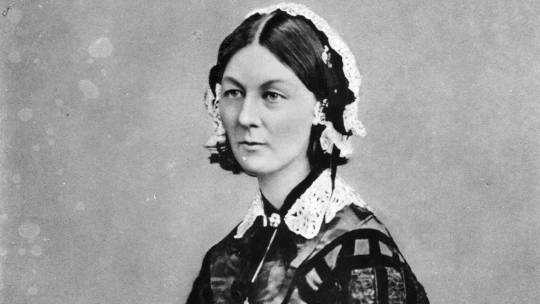
Florence Nightingale, first practicing nurse epidemiologist. Developed the first organized program for training nurses, the Nightingale Training School for Nurses (St. Thomas' Hospital, London). Established the first health-maintenance-and-restoration-based nursing philosophy. Known as the "lady with the lamp" during the Crimean War (1853) where she volunteered, traveling the battlefield hospitals nightly to treat the wounded.

Clara Barton, founder of the American Red Cross (1881). She risked her life provided self-taught nursing aid to wounded soldiers on the battlefields during The Civil War (1860-1965), and became referred to as the "Angel of the Battlefield". One of the first women to work for the federal government, she made the Office of Missing Soldiers to aid in the reunion of more than 20,000 soldiers with their families. While providing aid during the Franco-Prussian War (1869), the Red Cross movement was first brought to her attention, inspiring her to bring the movement to America.
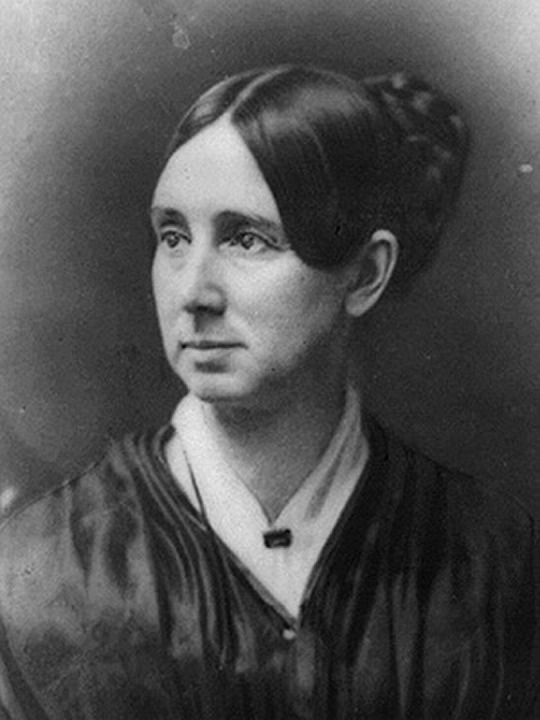
Dorothea Lynde Dix, an advocate of indigenous people and the mentally ill. She visited multiple mental institution, reporting her findings and advocated for better managed institutions, eventually establishing asylums of her own. During The Civil War (1860-1865), she aided the Union army by recruiting more than 3,000 nurses and was designated as the Superintendent of Army Nurses. She was known and respected for providing aid to the wounded soldiers from both Confederate and Union sides.

Mary Ann Ball, aka Mother Bickerdyke. She was a hospital administrator for the Union soldiers during The Civil War (1860-1865), regulating supplies and provision for the troops. Referred to as one of the best "generals" during the war for her efforts and organizations of military hospitals, following the war she remained an advocate for veterans - becoming an attorney for those who faced legal issues. 300 hospitals were built to aid the wounded over 19 different battlefields from her involvement.

Harriet Tubman, provided safe passage for slaves during the Underground Railroad movement. Known as the "Moses" of her people, her actions resulted in more than 300 slaves being lead to freedom. She provided nursing aide to the Union forces during The Civil War (1862-1865). Following the war, she played in active role in causes including the Womens Suffrage, and created the "Harriet Tubman Home for Indigent Aged Negroes" where orphans and the elderly could be taken in and care for.
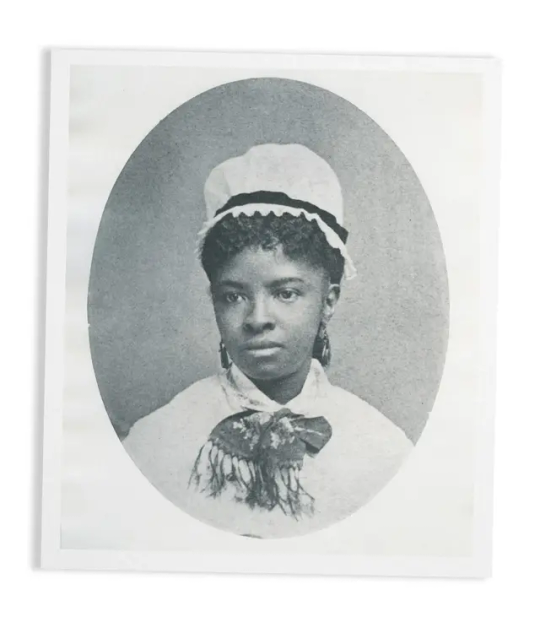
Mary Mahoney, brought awareness to the cultural and racial diversity in nursing, emphasizing respect and the inclusion of all in the profession. The first African-American to receive an official education for the nursing profession (New England Hospital for Women and Children, Boston - 1874). She became the first African-American member of what is now referred to as the American Nurses Association, and helped start up the National Association for Colored Graduate Nurses in 1908.

Isabel Hampton Robb, a large influence in the advancement of the nursing social status in society. She influenced the system of nursing education by implementing a grading policy in the program to improve the quality of the students graduating from the program. She authored the comprehensive and foundational text, Nursing: Its Principles and Practice (1893), and helped to standardize the nursing education all around. She served as president of both the National League for Nursing Education and what is now referred to as the American Nurses Association.

Lillian Wald, opened the Henry Street Settlement (1893) with her fellow nurse graduate, Mary Maud Brewster. Addressed the health needs of poor immigrant families residing in tenements of New York City's Lower East Side. Coined the term "public health nurse", she fought for public health care, women's rights, and children's rights. Her and Mary Brewster started the Visiting Nursing Service of New York. During her work at the Henry Street Settlement, she established one of the earlier playgrounds and aided in paying salary to the first Public School Nurses in NYC. She had a hand in starting up the United States Children's Bureau, the National Child Labor Committee, and the National Women's Trade Union League.

Mary Adelaide Nuting, known for becoming the first nursing professor in 1906 (Columbia Teachers College), and assisted in getting nursing education in Universities across the states. She attended the first nursing training following Florence Nightingale's inflence (John Hopkins Hospital Training School - 1889). Throughout her advancement in the nursing profession working at the school, she assisted in advancing the program - brought in scholarships and on-the-field experience; her work influencing other Universities create and better their own nursing programs. Founder of the American Journal of Nursing (1900), she also became the first registered nurse in the state of Maryland. Several of her authored and coauthored books are still implemented today in nursing programs throughout the nation.
#Historical Influences#Historical Nurses#Nurses in History#Nursing History#Women's History#Black History#Black Women's History#Florence Nightingale#Nursing Philosophy#Clara Barton#American Red Cross#The Civil War#Dorothea Lynde Dix#Mary Ann Ball#Mother Bickerdyke#Harriet Tubman#Lady with the Lamp#Angel of the battlefield#Mary Mahoney#Underground Railroad#Isabel Hampton Robb#American Nurses Association#Lillian Wald#Public Health Nurse#Mary Adelaide Nuting#Mary Maud Brewster#Nursing#Nurses#Nurse#public school nurse
4 notes
·
View notes
Text
U.S. Dorothea Lynde Dix
one day in 1814 she appeared on her paternal grandmother’s doorstep in Boston Massachusetts, having had enough of what biographer Francis Tiffany termed as Dorothea’s “immediate parents lacking in energetic fibre.”
(April 4, 1802 – July 17, 1887)
Dorothea (Christened Dorothy) Lynde Dix was born a pseudo-pauper, for although her paternal grandparents were well-off, her father and mother were rather underfunded. Dorothea was born to Joseph and Mary Dix on a tract of land owned by Joseph’s father, Elijah Dix, in Hampden, Maine. Her father was known for his fanatical flights of religious fervor equal only to…

View On WordPress
#biography#Class division#Dorothea Lynde Dix#Group Biography#group history#history#Insane#Poor#women&039;s history#women&039;s biography
0 notes
Text
This week: February 11-2018 in Raleigh

View On WordPress
0 notes
Text
Before “Little Women”
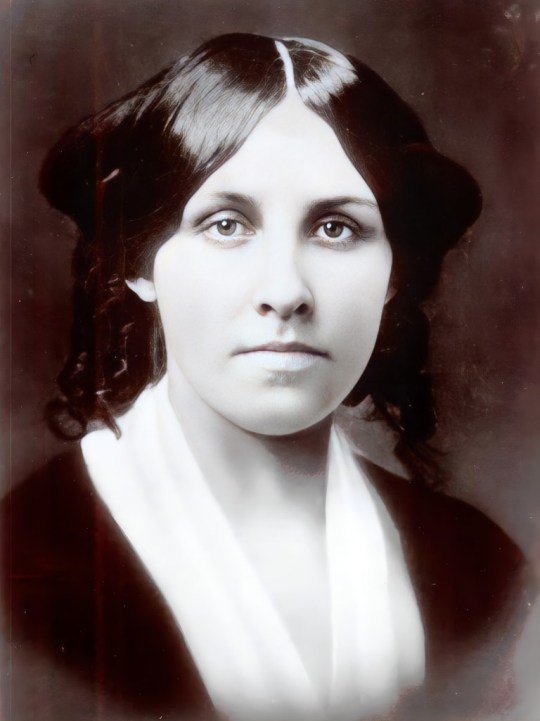
Louisa May Alcott is best known as the author of the American classic “Little Women,” and has become synonymous with her literary counterpart, Jo March. While the Alcott family and their experiences inspired the events of the book, we must remember it is fiction and Louisa was her own person. She was raised by the idealistic Bronson Alcott and practical Abigail May. The Alcott’s were often in debt, starving and moving from place to place, yet their unorthodox Transcendental beliefs encouraged them to continually sacrifice for others. It was not uncommon for them to ration their food and give what they had to spare to the less fortunate. The Transcendentalists supported the abolition of slavery before it was popular; Bronson welcomed an African American girl into his classroom and was later forced to close down his school for such a progressive act. The Alcott family even had connections to the Underground Railroad.
When the Civil War began, the Alcott’s did their part. They rolled bandages, donated their time and meager funds. For Louisa that was not enough. A woman of action, she was not satisfied with sitting on the sidelines and she was not faint of heart. For years she struggled alongside her family, striving for something more. At age fifteen she made a vow: “I will do something by and by. Don’t care what, teach, sew, act, write, anything to help the family. I’ll be rich and famous and happy before I die, see if I won’t!” She had always had a knack for writing and had begun to make a small name for herself writing blood and thunder tales. Louisa had become her family’s breadwinner.
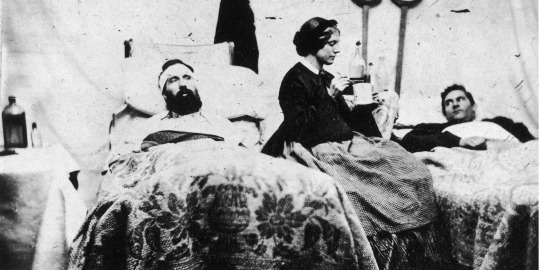
Dorothea Dix and her band of nurses broke barriers. Prior to the Civil War, it was unthinkable for a lady to attend to wounded and ailing men. Early on in the war, only married women were allowed to participate. By 1862, the Union was so desperate for volunteers, that they accepted unmarried ladies. When Louisa heard of this, she volunteered and headed to Washington. Bronson felt as though he were “sending his only son to war.” It was the only acceptable way Louisa could serve her country, without actually donning on a uniform and fighting. This was one of the many times she lamented being born a girl instead of a boy.
On her arrival at the hospital, Louisa’s eyes were open to the results of war. She supported the Union wholeheartedly and believed that slavery was a great evil. However, she realized that there was no glory in the suffering of men who shed their blood. Men of all ages and backgrounds were coming straight from the battlefield. They were mangled, ill, and many dying. The ones that survived, their broken bodies and spirits had to be repaired. Louisa washed them, administered medication, assisted in surgeries and amputations, read to them and helped them write letters home to their families.
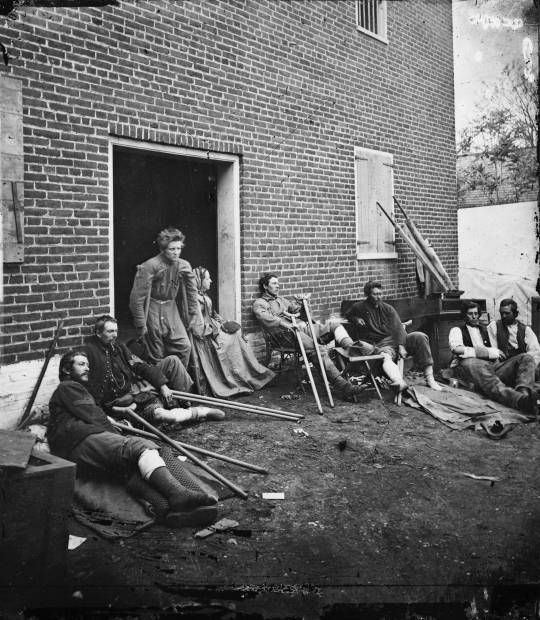
She connected with one Union soldier; a Virginian blacksmith named John. She was drawn to his strength and quiet grace. As he slipped away, she remained by his side, holding his hand. Withdrawing from him, the white marks of his fingers were still pressed into her skin. He also left a lasting impression on her heart. While she worked there, she sent letters home detailing her experiences. Her parents saved and cherished her correspondence.
Typhus, typhoid fever, cholera, and pneumonia struck down many of the patients…and the hospital staff. Louisa was in her sixth week of nursing when she contracted typhoid fever and struggled between life and death. Her long, dark hair –which she considered her one beauty- was shorn off to relieve her of her fever. The doctors treated her with mercury, in the form of calomel. Calomel was deemed unsafe, but many physicians still used it, which would result in mercury poisoning. When he heard she was deathly ill, her father Bronson escorted her from the hospital and brought her back home, where it took many months for her to recuperate. Prior to her service as a nurse, Louisa’s health had been robust. But now it was fragile and remained so for the remainder of her life. The mercury would have eventually left her system; however it is suspected that her illness and treatment could have let to her suffering from the auto-immune disease, Lupus.

When Louisa recovered enough from typhoid fever, she looked over the letters she had sent home. After some editing, she submitted them to a gazette. Excerpts of her work, “Hospital Sketches,” appeared in print throughout the east coast. In 1863, it was published in book form. A slim volume, it was a costly 50 cents and though the royalties she received did not lift her or her family out of poverty, it was a literary success. She received attention and made important connections, paving the way for her to become a famous author.
Louisa made her youthful vow partly come true. By 1868, through “Little Women,” she was famous and rich. Her family never had to worry about money again. Yet all of that came with a heavy price. The public always wanted another book, her health and emotional state were delicate and she never wrote the kind of fiction that she had dreamt of writing.
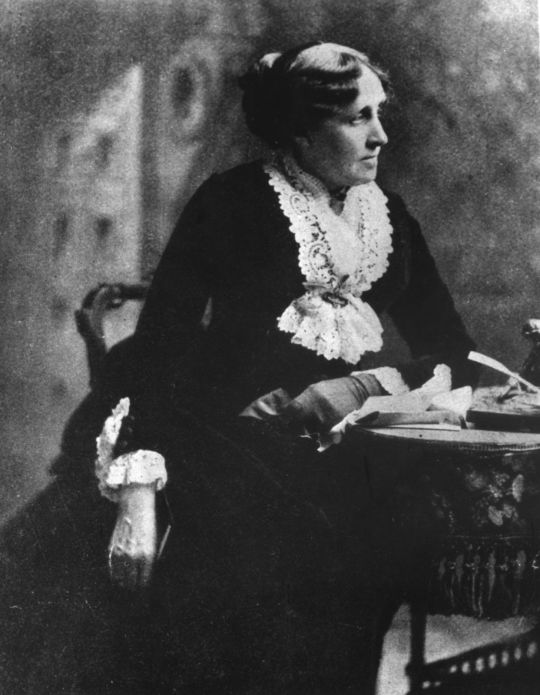
But she was forever proud of her service to her country and at that time in history, she was considered a war veteran.
4 notes
·
View notes
Text
Now that we are, shall we say, post mortem on GFL Boston I would just like to speak into the universe this idea:
Dual episode excursion to Bangor, Maine for Weird and/or Wonderful World AND Ghost Files.
WWW stops:
The cryptozoology museum that was in Portland relocated up there and it is frankly a CRIME that they haven't visited that yet;
Obviously Stephen King's house;
Bangor PD has The Duck (acab but The Duck);
Picture with the Paul Bunyan statue outside the Cross Arena;
Geaghans (I'm probably spelling that wrong, I usually do) is local to that area and their brews are really good; and
Slightly further afield: Dorothea Dix Park in Hampden, named for a woman born in Maine who championed penal reform and improved care, especially for those with mental illnesses.
Ghost Files:
In my mind our ghoul boys are going to the University of Maine campus just north of Bangor in Orono, which has a variety of reported hauntings from what I've been told and have uncovered over the years since I was a student there. We've got two different dorm mother hauntings, a haunting that supposedly inspired "The Shining", and lots of movement and noises. (Mind you I've never witnessed any of this so I'm a little bit Shaniac on this, but I am open to my mind changing. I certainly have been haunted before, after all.)
Those are my thoughts! Any other watcherinas from Maine with ideas? Any other former Black Bears? Let me know, I'd love to read them.
#we are watcher#ghost files#weird and or wonderful world#watcher entertainment#shane madej#ryan bergara
3 notes
·
View notes
Text
Background
Mental institutions in America have come a long way since the opening of the first official Insane Asylum by Dr. Thomas Bond and Benjamin Franklin in 1751. Though these asylums have a dark past, it is important to have preliminary knowledge of the history behind these asylums to understand how they have evolved to what they are today.

According to "The History of Asylums", the objective of asylums in the early 1700’s was to establish an institution that treats individuals who have physical and mental impairments and provide them with supervision to ensure safety and shelter. The asylums had moral intentions from the start; however, with an increase of patients in need, the morals of these institutions dissipated.
The same source then reveals that when the demand of these institutions rose, there was not enough funding, workers, and resources to give them proper treatment. This resulted in a shift of focus from treating patients with care, to trying to “cure” them as fast as possible. Due to a lack of resources, most patients faced maltreatment and were viewed as burdens to society. Horrific practices were tested on them such as trepanation, where doctors drilled holes into patients skulls to release the mental illness out from their blood. As well as electroshock therapy which paralyzed and left patients with broken backs.
On top of these life threatening procedures, patients were neglected by caregivers, had hazardous living conditions such as freezing temperatures, no ventilation, and poor nutrition. In asylums this torture was masked as help and isolated the mentally ill from society instead of actually treating their disorders.
It was not until the 1840’s that the maltreatment of patients in asylums was addressed. Dorothea Dix was an important figure who advocated against the system by evaluating the system. She did this by visiting asylums and taking note of the treatment of patients which was reported to state legislation. Due to her efforts she was able to turn asylums into state-regulated mental institutions. This ultimately pushed mental facilities to provide temporary stays, not to cure patients, but to help them learn how to live with their illness and manage their condition to keep them from getting worse.

In knowing this past, it can be seen that mental institutions have moved in a better direction. In this blog, I plan to investigate the motives of mental institutions today and get an inside look of what it's really like to be admitted into a psychiatric hospital. I will explore the flaws that still exist within the system and maintain a focus on the rise of depression, anxiety, and suicide in our current day and age.
Anti Depression pills such as SSRIs have been around since 1987 and are prescribed to treat mental illness largely today. This seems to be a quick fix to put people in need to make them think that they are doing something to help. Why is mental illness progressing more than ever and why are there no new solutions? It is much easier and profitable for pharmaceutical companies to prescribe someone with medication, or sedate them rather than really find the source of people's problems. I believe that much of this problem relies on ignorance towards sociological issues, and that we need to focus on addressing issues and trends instilled to our society to diminish the cycle of the mental health crisis that resides in America.
6 notes
·
View notes
Text




more from Dorothea Dix 🐝
#nature photography#beauty of nature#park#lensblr#original photography#original photographers on tumblr#iphone photography#sunflower#sunflower aesthetic#sunflowers#sunflower field#yellow aesthetic#flowers of tumblr#field of flowers#yellow#yellow flowers#floral garden#sunny#bumble bee#bee#pollination#leaves#flower petals#dorothea dix#raleigh nc#north carolina#raleigh#pollinators#flower garden#nature
99 notes
·
View notes
Note
Gloria time!
What is a noticeable physical attribute of your OC?
How does your OC talk/what does your OC’s voice sound like?
What was your OC’s childhood like?
What is your OC’s level of education?
What is your OC’s favorite food?
What is your OC’s favorite kind of music (and song if there is one)?
What is a notable physical attribute of your oc?
The freckles/scars from picking on the sides of her cheeks, her notable body hair (mostly arms in normal circumstances- the only people who really see anything else, which would be under her clothes, are Blondie and herself), and her dark brown eyes that are almost black. Blondie actually notes the last one specifically when he describes his first meeting with Gloria.
How does your oc talk/what does your oc's voice sound like?
Gloria is highly nonverbal. If she does talk, it's in short phrases and singular words. Only when there's something super important to say will she talk in full, eloquent sentences. Blondie is a pretty nonverbal guy himself, so the two communicating through little pieces isn't a problem. Even if Blondie does talk in longer, normal conversation, he's understanding of Gloria's way of speaking. Her voice sounds like mine does right about now- my voice but super raspy. (I had surgery and the intubation made my voice scratchy. I wish I sounded like this all the time tbh it's sexy)
What was your oc's childhood like?
Well, there's the Trauma that kind of causes her to do What She Does (the killing and such), but otherwise pretty normal and quiet. She grew up on a ranch with her parents, grandparents, and brother, as well as a cousin who died pretty young so she doesn't remember him much. Gloria was very studious and enjoyed learning about various subjects, particularly science. She'd observe the world around her- the animals, plants, environment. When someone in the family was sick, she liked to observe their condition. A lot of other kids thought she was weird for being quiet and "creepy" and some of them were racist/xenophobic so she had pretty much no friends.
What is your oc's level of education?
So, Gloria was a nurse who cared for the wounded in the Civil War, but she wasn't educated under Dorothea Dix's standards. She wasn't 35 and sure as hell wasn't plain looking, as Dix apparently wanted in a nurse, so her education came from "nurse" nuns in the Catholic Church she grew up in. She was only allowed to treat soldiers because of the lack of caretakers in their area. She did, however, use her acquired medical knowledge over the years, caretaking experience while volunteering with the nuns, and some stolen education material standardized by Dix that she got her hands on while working in the military. So I'd say she has that for her education.
What is your oc's favorite food?
Fry bread!! It was a staple in one of the cultures that comprises her multicultural/racial heritage. She eventually makes some for Blondie and he loves it, topping it with honey. (I've only had it, plain, a couple of times when my brother made it, it's super good!! And. Before anyone asks I am, like Gloria, half Indigenous, so I chose a dish of one of my cultures that I personally enjoy and was around in this era. Many Indigenous chefs have complicated feelings on it, but it's chosen in this case for the purpose of historical accuracy, not modern symbolism. Also, it tastes good.)
What is your oc's favorite kind of music (and song if there is one)?
Anything Blondie plays on the guitar for her. Lol. Ranging from well-known songs to things he's personally written or just plays by ear. There's one he plays pretty frequently that he "just made up" but he secretly wrote it about her. She knows this, so that's her favorite.
Thank you for asking!!! 💕💕💕
4 notes
·
View notes
Text
Notable American Women: BARTON, Clara (Dec. 25, 1821 - Apr. 12, 1912)
“...Named Clarissa Harlowe, after the heroine of Richardson’s novel, she preferred to be known simply as Clara. She was deeply influenced by her family. Her father, to whom she was especially close, was a veteran of the Indian wars and a substantial farmer and sawmill owner who inspired his daughter with patriotism, a love of military lore, and a broad humanitarian interest.
From her mother, a practical, hot-tempered, and warm-hearted woman, she acquired a lifelong interest in the household arts. Her four considerably older brothers and sisters also played important parts in her education, guiding her in mathematics, literature, and out-of-doors activities, including horsemanship. “I had no playmates but in effect six fathers and mothers,” she later wrote.
…Plain in feature, almost neurotically sensitive, and endowed with an abundance of nervous energy, she early evidenced a strong will, a determination to surmount obstacles, and a capacity to identify herself with needy sufferers. At eighteen, little more than five feet tall, she began to teach in neighboring schools, her early success giving her increasing self-confidence and poise. Her patience, integrity, sense of fun, and ability to inspire won the life-long devotion of many of her pupils.
…In the confused days that marked the beginning of the Civil War, Clara Barton found an opportunity to aid and befriend homesick Massachusetts soldiers in the capital. Later, witnessing the almost total lack of first-aid facilities at the battle of Bull Run, she advertised in the Worcester (Mass.) Spy for provisions for the wounded.
Using her own limited quarters as a storeroom, she accumulated bandages, medicines, and food. Despite initial opposition in the War Department and among field surgeons, she and a few friends began in the summer of 1862 to distribute these supplies by mule team to ill-equipped hospitals and camps and on the battlefields themselves.
…Insistent on keeping her operations independent of the United States Sanitary Commission and of Dorothea Dix’s division of female nurses, Clara Barton short-circuited military routine and again and again appeared at military engagements with desperately needed supplies. Adaptable and cooperative, she was able to commandeer army mules and wagons for transport. It was her genius to blend sympathy with efficiency and never-failing resourcefulness.
…Increasingly she won the respect and admiration of commanding officer and surgeons, one of whom wrote, after seeing her in action at a critical juncture, that “if heaven ever sent out a holy angel, she must be one, her assistance was so timely”. She always insisted that she was only one of hundreds of women who had rendered such service, yet by thousands of soldiers she was remembered as the Angel of the Battlefield.
…Undismayed by governmental and public apathy, she initiated what was to prove a five-year campaign for the organization of an American Red Cross Society and the adherence of her country to the Geneva Treaty. …Spending increasing periods of time in Washington (her permanent home after 1884), she worked indefatigably, though often in a mood of profound discouragement, to persuade the State Department, the White House, and Congress to ratify the treaty.
…Finally, on Mar. 1, 1882, with the approval of the Secretary of State James G. Blaine and the Senate Committee on Foreign Relations, President Arthur signed the Geneva Treaty. Two weeks later the Senate ratified it. Both at home and abroad, it was generally agreed that American adherence could not have been effected had it not been for Clara Barton’s persistent campaign.
…Aware of the tendency of some philanthropic organizations to remain in operation longer than the situation warranted, she made a point of leaving when the main work was done. Although she cooperated with local relief groups and with government agencies when these were involved, she insisted on keeping tight rein over whatever was done. Her program consisted of getting as speedily as possible to the scene of the emergency with relief--food, clothing, medicine, materials for shelter. Anticipating a later emphasis, she was concerned with rehabilitation as well as with relief.
…But there was serious criticism, both from within the organization and from outside, of Miss Barton’s management. Many felt that her place was at her desk in Washington rather in the field preparing soup for soldiers or establishing orphan asylums for Cuban waifs. So ill-defined were relations between the national Red Cross organization and its nominal auxiliaries that much of the useful red Cross war work, particularly in the training of nurses, was wholly independent of the national office.
…She could not delegate authority. Any criticism of her informal method of handling finances, which was without benefit of acceptable bookkeeping or audits, seemed to her to impugn her integrity. The truth was that she clung to power when it was clear to all but her most devoted supporters that new methods and new leadership were required.
…Whatever her failings, the honors were unquestionably merited. In a public career spanning over forty years, she had not only performed outstanding humanitarian services at home and abroad, but, above all, she had made the emblem and meaning of the Red Cross familiar to her countrymen.”
- Notable American Women, Volume I: A-F, 1971
6 notes
·
View notes
Text
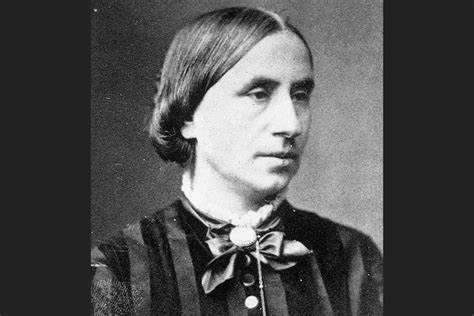
"Men need knowledge in order to overpower their passions and master their prejudices."
Happy Birthday, Dorothea Dix (1802-1887)
Born in Hampden, ME
2 notes
·
View notes
Text
Eat Your Moral Spinach: Justice Helps Us Improve Our Communities and Our Selves

I am interested in the virtue of justice because I think that it is the hardest to define. More than any of the other virtues, I think that the definition is subjective, since the virtue sits at such a complicated intersection between the individual and their environment. In his writings, Plato sets justice apart from other virtues and claims that it functions in both individuals and societies. Modern-day social movements are making strides towards justice. However, these ideas of justice are not the same. I would define justice as the desire to improve oneself so that the larger society might improve. Since justice exists in the space between individual and society, I think that one of the best ways to cultivate it is by seeking education. By understanding others’ points of view and learning more about the way our society is organized, it is easier to grow in the direction of cooperation and coexistence.
Plato's ethics: https://plato.stanford.edu/entries/plato-ethics-politics/
In my opinion, Dorothea Dix is an exemplar of justice. She conducted investigations of many state institutions—jails, almshouses, etc.—and documented the mistreatment of the mentally ill. She repeatedly petitioned state and federal legislators for better facilities and standards of care. While she was often denied and ridiculed, she continued to work in healthcare as a nurse and reformist until just a few years before her death. She was responsible for the founding of nearly thirty-five hospitals.
Biography of Dorothea Dix: https://www.ncbi.nlm.nih.gov/pmc/articles/PMC1470530/
Galtung divided his table of basic needs into “outer needs” and “inner needs.” Based on those names, I would have guessed that justice would align more with the outer needs, but in actuality, I think justice reaffirms an individual’s inner needs: freedom and identity. Living in a just society, or with a just mindset, encourages one to live in full connection with themselves and others. I also think that justice is related to Seligman’s concept of positive relationships. Our relationships include more than our connections to family and friends—they are connections to everyone around us. Working to strengthen a sense of justice makes those connections deeper and more authentic.

Galtung's basic needs approach: https://www.transcend.org/galtung/papers/The%20Basic%20Needs%20Approach.pdf
If I were looking for justice, I would look for someone setting goals or making suggestions for the improvement of society. G.E.M. Anscombe offers a convincing argument for using language like “just or injust” instead of “right or wrong.” She explains how right/wrong language comes from the divine law conception—a framework that is no longer in play, but which continues(d) to govern moral language. In her essay Modern Moral Philosophy, she says, “if the divine law obliges not to commit injustice by forbidding injustice, it really does add something to the description ‘unjust’ to say there is an obligation not to do it” (p 18). She provides much more detailed analysis of the language of justice, but I think this quote is an interesting place to “enter the forest of justice,” since it bridges two different ideas of morality.
2 notes
·
View notes
Note
In the US did asylums/hospitalization for mental illness ever actually work or did they just always make things worse? Speaking of mental illness-and I know that using modern words is typically like, very not Accurate when it comes to diagnosing Past Descriptions of various disorders- what were some of the modern day 'diagnoses', causes, etc of what 19th century folks would call 'insanity'? This is super vague lmao.
You do not understand how excited I have been to answer this. I have been fascinated by asylums since I was like 10 years old (I had a rough childhood). Also, that's not vague! I was easily able to answer your question :)
So, US asylums were heavily based off of European asylums, and, beginning in the early 19th century, there was the moral treatment movement. This philosophy encouraged treating patients with kindness and respect. A few people who influenced this movement were Dr. Benjamin Rush, Dr. Thomas Story Kirkbride, and Dorothea Dix. The methods involved in this philosophy were helpful for non-chronic patients. However, it became ineffective when overpopulation caused asylum staff to be unable to practice this properly.
Now, when it comes to the diagnoses, information is very limited. For the most part, mental illness was referred to as lunacy or insanity. In the asylums, patients were usually given one of three diagnoses: mania, dementia, or melancholia. This could refer to any of the diagnoses we know now, and the only way we can see what they may correlate to are in the individual patients' information. For example, this patient, whose symptoms seem to be close to major depressive disorder.
Admitted 20th April 1872—age 33 draper's assistant. Form—Mania. In a very melancholic condition—says he is about to be married but has not work or money. Says he goes to Camborne churchyard and sits on the stones so as not to be a burden to his parents.
Another patient was described as follows:
May 7th 1872 Suffering mania—has grandiose ideas, emotional and irritable says he is in love with the world. January 1873 Suffering from dementia—says he cannot remember things.
Source: Journal of the Royal Society of Medicine
For most of the century, people believed that mental illness was caused by physical injury or other circumstances. There was very little understanding of the functioning of the brain, so mental illness was often treated like physical affliction. The general viewpoint only went downhill from here in the 1880s after Freud did his thing.
I hope this was able to answer your question, but if not, I'll link my other sources so you can do further reading. Thank you so much for your question!! This brought back questionable childhood memories of doing research on asylums :)
Sources:
Study.com- Insane Asylums in the 1800s: History and Outlook
Science Museum- A Victorian Mental Asylum
University of Toledo Libraries- Mental Health
#history#asks#19th century#asylum#mental health#mental health treatment#history of medicine#american history
2 notes
·
View notes